Key takeaways
- Activist teacher resources encourage critical thinking and emotional connections, transforming the educational experience into one that fosters social justice and equity.
- Storytelling effectively humanizes complex concepts, making them relatable and engaging, encouraging students to connect ideas with personal experiences.
- Techniques like creating relatable characters, maintaining suspense, and incorporating reflection enhance storytelling’s effectiveness in the classroom.
- Building a safe classroom environment promotes shared storytelling, increasing student engagement and deepening their understanding of complex issues.

Understanding Activist Teacher Resources
Activist teacher resources are more than just lesson plans or materials; they embody a commitment to social justice and equity in education. Have you ever felt that the standard curriculum misses the deeper stories behind complex issues? That’s where these resources become powerful tools—they invite us to challenge norms and spark critical thinking in our classrooms.
From my experience, using activist resources has made teaching feel more purposeful. I remember the first time I introduced a resource focused on systemic inequality; the students’ reactions were immediate and profound. It wasn’t just about facts anymore—it was about connecting emotionally and thinking critically, which changed the way they engaged with the lesson.
What strikes me most is how these resources empower both teachers and students to become changemakers. They provide a foundation for honest conversations that might otherwise feel risky or overwhelming. In a world that often silences difficult topics, activist teacher resources open the door to understanding and action.
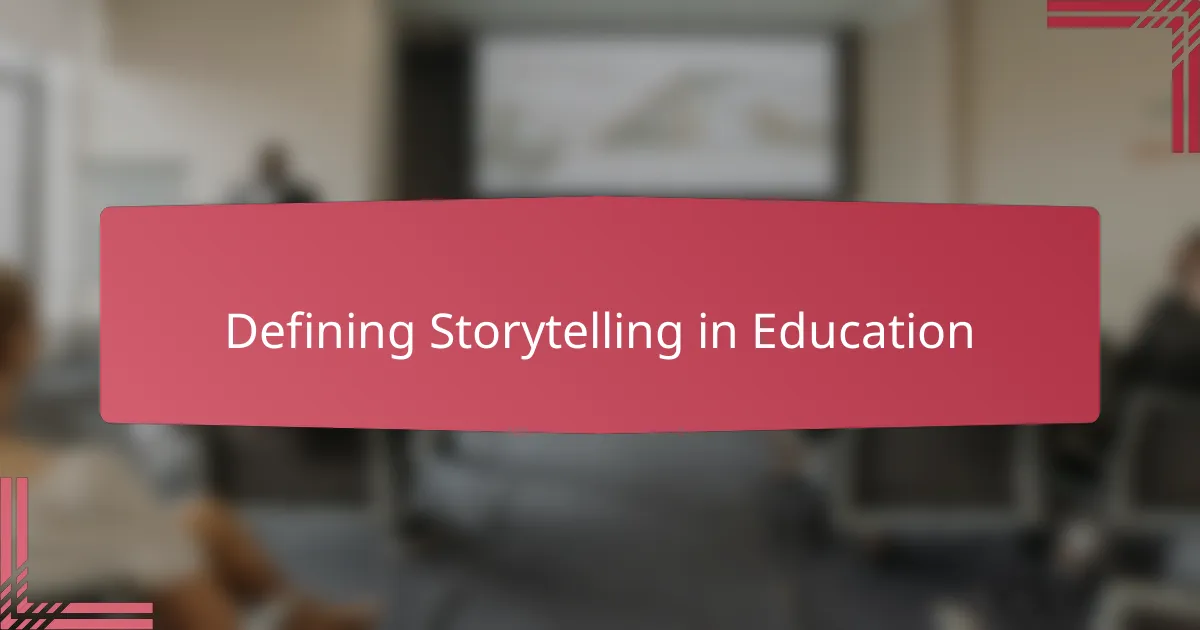
Defining Storytelling in Education
Storytelling in education is more than just sharing tales; it’s about weaving information into narratives that resonate emotionally and intellectually. Have you noticed how a well-told story can make even the most complicated ideas click? From my experience, stories create a bridge between abstract concepts and real-world understanding, making lessons memorable and meaningful.
When I first started using storytelling to explain complex topics, I was surprised by how much more engaged my students became. They weren’t just listening—they were picturing, feeling, and questioning alongside me. This approach transforms learning from a passive reception of facts into an active, shared journey.
What makes storytelling so effective is its ability to humanize content. It invites students to see beyond textbooks and statistics, connecting concepts to people’s experiences and emotions. Isn’t that what education should be about—connecting minds and hearts to foster deeper understanding?
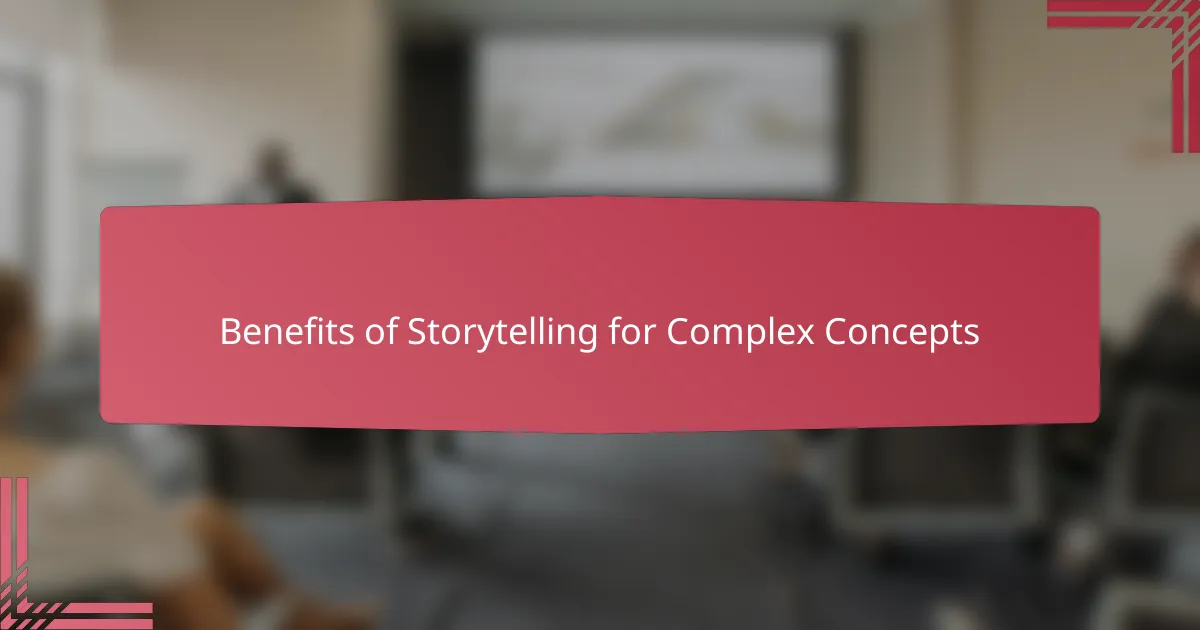
Benefits of Storytelling for Complex Concepts
One of the biggest benefits I’ve seen with storytelling is how it breaks down intimidating ideas into relatable moments. Have you ever felt overwhelmed trying to unpack a complex theory or system? When I frame these concepts within a story, students suddenly see the human side—it’s no longer just jargon or numbers, but real experiences that make the ideas accessible.
I recall a lesson on social justice where I shared a narrative about a community’s struggle for equity. The story sparked empathy and curiosity, encouraging students to ask deeper questions instead of just memorizing definitions. This emotional connection made the learning stick longer and inspired them to think critically about the broader implications.
Storytelling also creates a safe space for exploring difficult topics. When ideas are wrapped in stories, students feel less defensive or distant. It’s like we’re on a shared journey, discovering complexity together rather than being overwhelmed by it. Don’t you think learning feels more meaningful when it’s a dialogue, not a lecture?
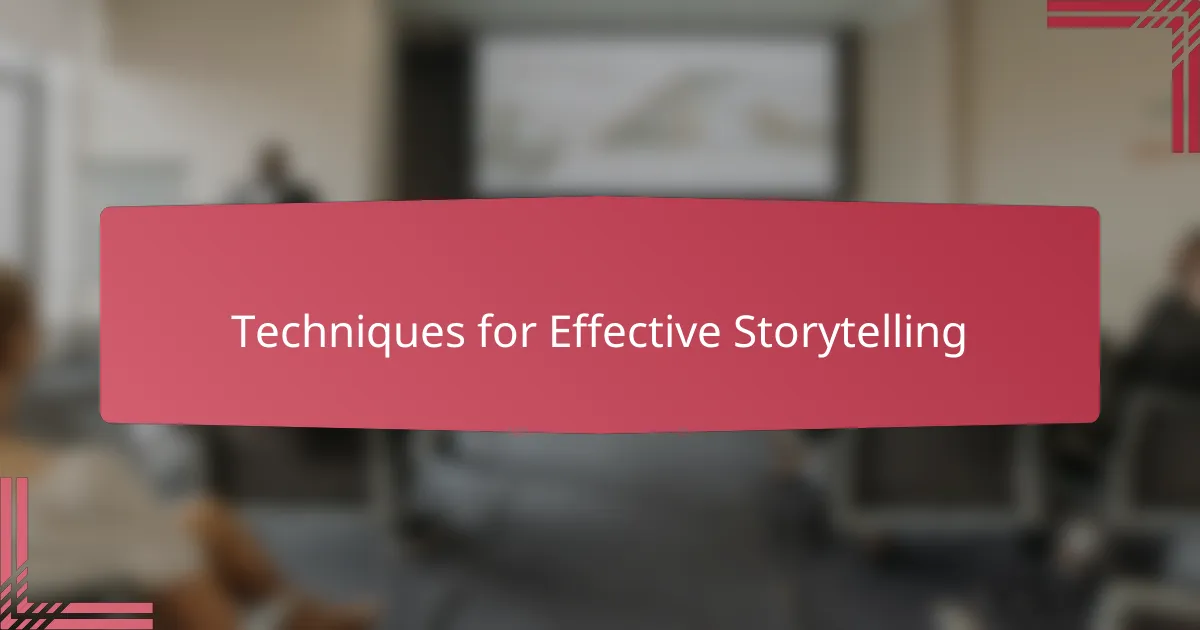
Techniques for Effective Storytelling
One technique I rely on is crafting vivid characters and settings that students can relate to. When I tell stories grounded in real people’s experiences, I notice my students lean in closer—curiosity sparks because the narrative feels alive, not abstract. Have you ever seen a classroom go silent because everyone is hooked on a story? That’s the power of well-drawn details.
Another approach that’s worked well for me is using suspense and pacing to guide understanding. Instead of dumping all the information at once, I reveal parts of the story step by step, inviting questions along the way. This mirrors how we naturally process complex ideas, turning confusion into discovery and engagement.
I also find it effective to weave in moments of reflection within the story. Pausing to ask, “What would you do here?” or “How does this make you feel?” transforms passive hearing into active thinking. It’s those pauses that turn storytelling from a monologue into a conversation, deepening comprehension and empathy simultaneously.
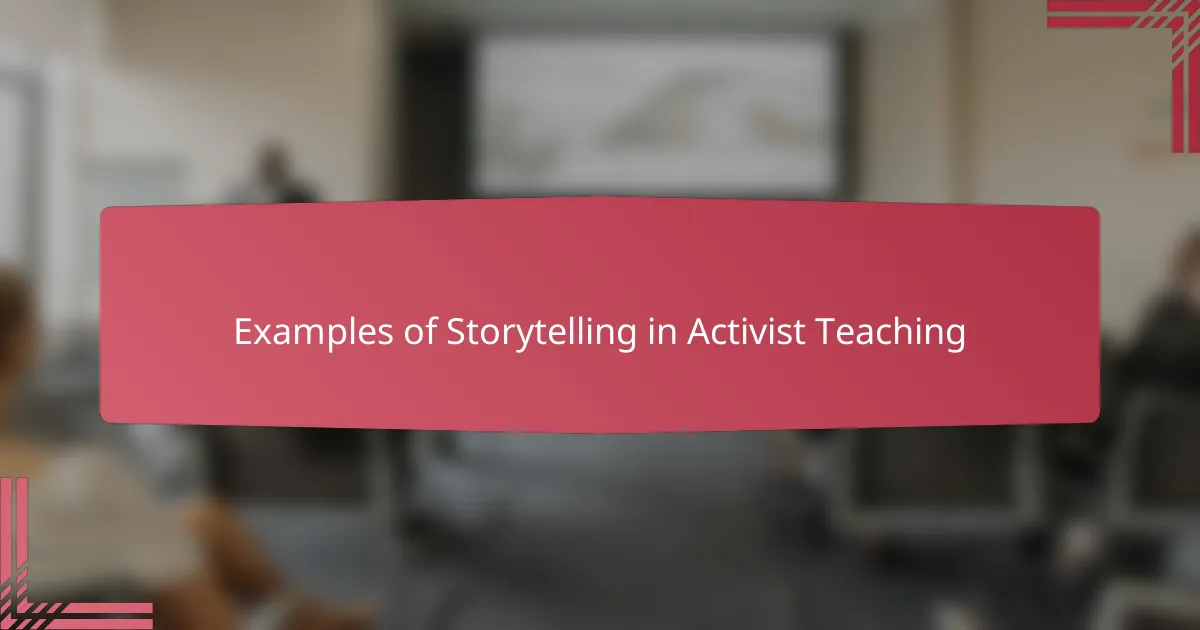
Examples of Storytelling in Activist Teaching
When I introduced the story of a young activist fighting for educational equity, the classroom atmosphere shifted instantly. Students who had previously been disengaged suddenly saw the struggle unfold through a relatable voice, sparking thoughtful questions and genuine empathy. Have you noticed how hearing a single person’s journey can illuminate the complexities behind systemic issues in a way statistics never can?
In another lesson, I narrated a community’s resistance against environmental injustice, weaving in personal hardships and collective resilience. This storytelling approach made abstract policy debates tangible, inviting students to consider how these issues affect real lives. It’s a reminder that stories not only inform but also mobilize understanding.
Sometimes, I bring in stories from my own experiences as an activist teacher, sharing moments of challenge and hope. These candid reflections create trust and open the door for students to share their own perspectives. Doesn’t learning deepen when it feels like a shared conversation rather than a one-sided lecture?

Personal Experiences Using Storytelling
One moment that stands out to me was when I used a story about a family navigating educational barriers to explain systemic inequality. Seeing students connect their own experiences to the narrative was powerful—it made me realize storytelling isn’t just about teaching facts, but about creating empathy. Have you ever noticed how a single story can suddenly make a complex issue feel personal and urgent?
I also recall a time when a student approached me after class, moved by a story I shared about grassroots activism. They said it helped them understand the courage required to challenge injustice, something that dry data never conveyed. That conversation reminded me how stories can inspire not only understanding but also a desire to take action.
Sometimes, I worry that complex topics might overwhelm students, but storytelling has been my go-to tool to ease that burden. By framing lessons around relatable experiences, I’ve watched curiosity replace confusion in the room. Isn’t it amazing how a well-told story can transform hesitation into engagement?
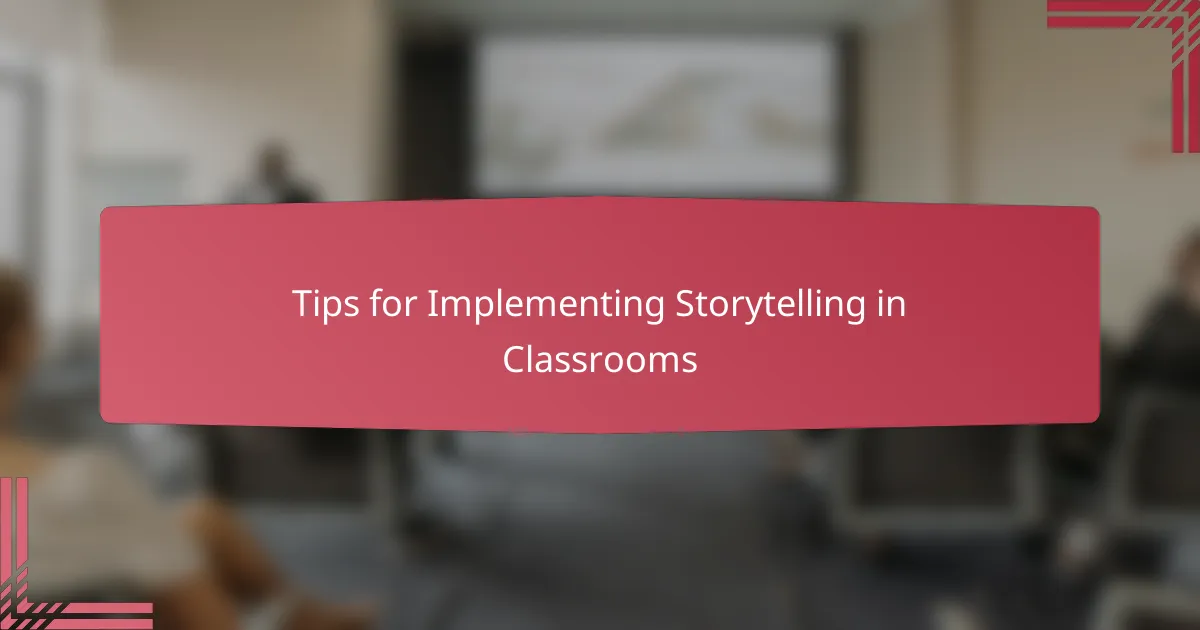
Tips for Implementing Storytelling in Classrooms
When I first brought storytelling into my classroom, I made sure to start with stories that felt natural to me and relevant to the lesson. I found that when the story resonates with my own passion or experiences, that authenticity shines through and invites students to engage more deeply. Have you ever noticed how your enthusiasm for a story can be contagious? That’s a simple yet powerful tip I always keep in mind.
It’s also helpful to keep stories concise and focused. Complex concepts can feel overwhelming if the narrative gets too long or complicated. I try to break the story into small, digestible parts, pausing often to check in with students’ thoughts or questions. This not only maintains their attention but also transforms the story into an interactive experience rather than a one-way talk.
Lastly, I encourage creating a safe space where students feel comfortable sharing their own stories or reactions. Storytelling isn’t just about the teacher’s voice—it’s about building a classroom community of listeners and storytellers. When students realize their perspectives matter, their engagement skyrockets, and the learning goes beyond the lesson itself. Have you tried inviting students to contribute their voices in storytelling moments? It can be truly transformative.